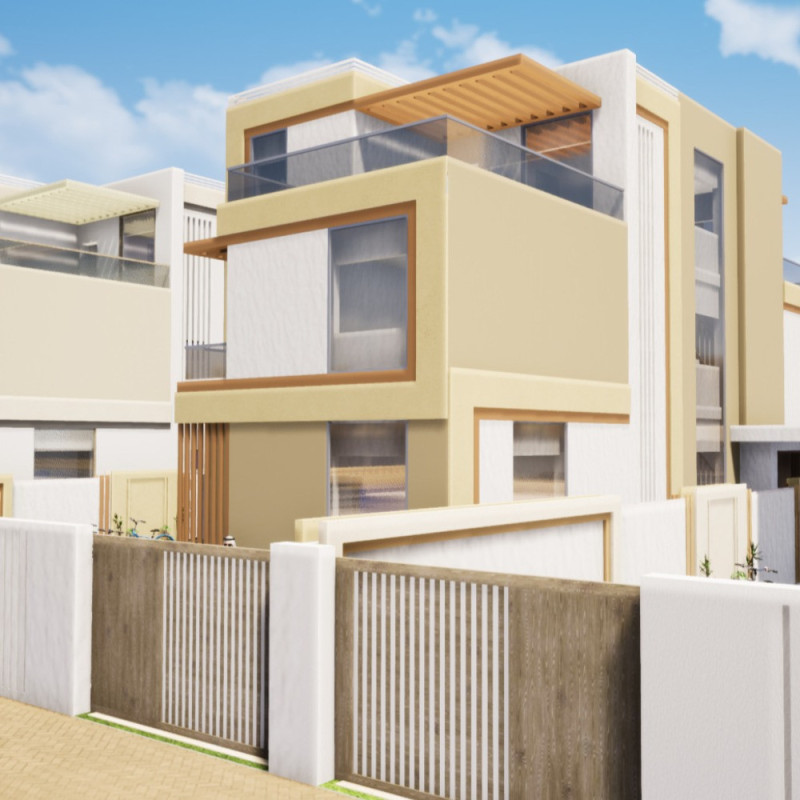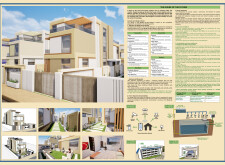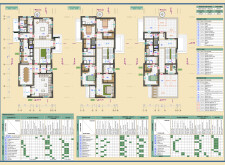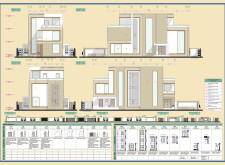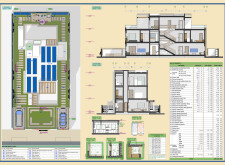5 key facts about this project
### Overview and Concept Development
The House of the Future embodies a contemporary approach to residential architecture, designed to meet the evolving needs of families while prioritizing comfort, functionality, and sustainability. Located within an undefined geographic context, the design redefines the home as a supportive space that nurtures family relationships and promotes well-being. The project integrates technological advancements, ensuring that living spaces are adaptable and conducive to modern lifestyles.
### Spatial Organization and Functional Layout
The architectural design is meticulously structured across multiple levels, ensuring an efficient distribution of spaces that cater to various family activities.
**Ground Floor:** The entrance is multifunctional, leading into expansive living and dining areas that facilitate connection to the kitchen and outdoor gardens. The kitchen features contemporary amenities designed for both social interaction and culinary functions, seamlessly linking to outdoor spaces that encourage recreational activities.
**First Floor:** This level includes a master suite with en-suite facilities and private balconies, along with additional bedrooms designed for privacy and practicality. A family lounge serves as a central space for relaxation and interaction.
**Second Floor:** The upper level allows for flexibility in use, accommodating future modifications for guest rooms or expanded family needs. The adaptable layouts can respond to changing dynamics, ensuring long-term usability.
### Materiality and Sustainability
The choice of materials significantly enhances the design's functionality and environmental consciousness. Reinforced concrete provides structural integrity, while ceramic tiles and stone finishes contribute to durability and maintenance ease. Large aluminum-framed glass panels promote natural light and visual connectivity to the outdoors, complemented by warm wooden accents.
The project emphasizes sustainable practices through features such as a solar power system that reduces energy costs, a rainwater harvesting system for non-potable uses, and smart home automation for energy management. These elements collectively align with principles of environmental stewardship and energy efficiency, highlighting a commitment to sustainable living.
### Innovative Features
The design incorporates a harmonious circulation strategy, allowing for effortless movement throughout the home. Smart home technologies integrate across various functionalities, enhancing user experience while reinforcing energy conservation and security. Outdoor and indoor spaces are thoughtfully interconnected, creating an inviting atmosphere that fosters tranquility and connection with nature.
Future adaptability is a key consideration, enabling residents to modify or expand their living spaces with ease as their needs change over time.


